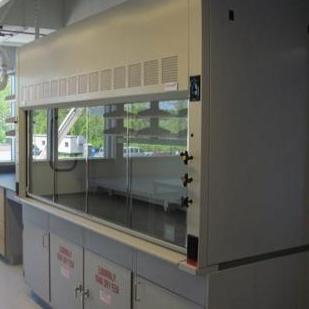What Is Fuming Sulfuric Acid?
Fuming sulfuric acid, more commonly called oleum, is made by dissolving sulfur trioxide (SO3) in concentrated sulfuric acid (H2SO4). This results in a mixture of compounds including sulfuric acid, disulfuric acid (H2S2O7) and free sulfur trioxide. Being volatile, sulfur trioxide causes the acid to fume as it absorbs moisture from the air, creating a cloud of tiny sulfuric acid droplets. Fuming sulfuric acid is produced by the normal industrial process used to make sulfuric acid, and most of it is converted into this chemical. A relatively small proportion, however, is retained as oleum and used in the manufacture of explosives, drugs and dyes.
The industrial process used to manufacture sulfuric acid begins by oxidizing sulfur dioxide (SO2) to produce sulfur trioxide; this substance could react with water (H2O) to yield sulfuric acid. This reaction, however, is too violent to be easily controlled, and so, the sulfur trioxide is instead dissolved in existing concentrated sulfuric acid to form oleum — fuming sulfuric acid. The greater part of this is then converted to sulfuric acid by carefully adding it to the appropriate volume of water. As long as the oleum is added to the water, rather than the reverse, the reaction, although exothermic, is controllable. The remaining oleum can be put to other industrial uses.

Oleum is available in different grades, depending on the amount of dissolved sulfur trioxide. Containers will indicate the grade by stating the proportion of free sulfur trioxide — for example, 20%, 30% or 65%. Oleum is normally an oily, fuming liquid, but some forms are solid at room temperature.
Sulfur trioxide reacts with sulfuric acid to produce disulfuric acid, also called pyrosulfuric acid: SO3 + H2SO4 → H2S2O7. Pure disulfuric acid is solid at room temperature, but is rarely used either industrially or in the laboratory. In oleum, it exists alongside sulfuric acid, free sulfur trioxide and possibly some more complex molecules.
Fuming sulfuric acid is an even more powerful dehydrating agent than sulfuric acid. It reacts very violently with water, releasing a great deal of heat and acid spray, unless it is added slowly to the water. Like sulfuric acid, it removes water from carbohydrates, leaving carbon, so that it chars paper, wood and many other organic materials. So much heat is released by this reaction that it may cause combustion.
A major application of fuming sulfuric acid is in nitration reactions. It is mixed with nitric acid to produce nitronium (NO2+) ions that add nitro (NO2) groups to organic compounds. For many of these reactions it is essential that no water is present. This is usually achieved by mixing commercial — 68.5% — nitric acid with fuming sulfuric acid so that the latter absorbs all the water. Nitration reactions are important in the production of explosives and dyes.
Oleum is also used as a sulfonating agent in organic chemistry. This means that it can add a sulfonic acid (SO3H) group to an organic compound. Sulfonated compounds include important drugs such as sulfonamides as well as detergents and dyes.
Due to its dehydrating properties, violent reaction with water and volatility, fuming sulfuric acid is a very hazardous chemical to work with. It causes severe burns on skin contact and inhalation of the fumes may cause serious damage to the respiratory system. In laboratories, experiments using this acid are normally carried out inside a fume hood.
AS FEATURED ON:
AS FEATURED ON:











Discuss this Article
Post your comments